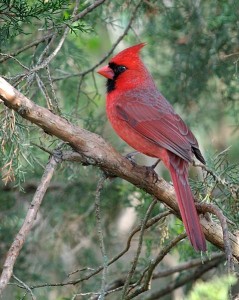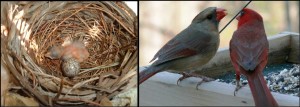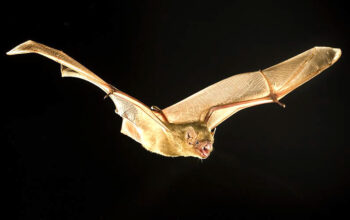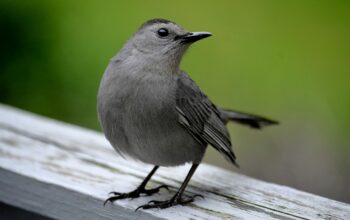
The Northern Cardinal, a member of the subfamily Cardinalidae, is also commonly referred to as the common cardinal or red bird. This species, named by colonist after the red robes and caps worn by Roman Catholic cardinals, is a resident of the eastern United States, southern Canada and northern Mexico. Cardinals can be found in woodland edges, thickets, brushy swamps and gardens year round. They are considered accomplished songsters, singing all year rather than just in spring.
Male Northern cardinals are bright red, with a distinctive crest and a black mask around the eyes and chin. This red is created by carotenoid pigments in their diet. The females are more rust-brown, with tinges of red on the crest, wings and tail. The birds both have a stout, bright coral-colored beaks that are cone-shaped, perfect for their mainly granivorous diet of mostly weed seeds and grains. They also eat fruit and insects, especially during breeding season. Pairs mate for life, during courtship the male bird will feed the female seeds beak-to-beak and if the mating is successful, may continue this feeding throughout the eggs incubation. These birds have also been known to sing to each other before nesting. A clutch of three to four eggs are laid, and two to four clutches may be produced each year. The male cares for and feeds the chicks while the female incubates the next clutch.
In preparing the nest, the male bird will often collect the materials while the female constructs the nest. She crushes the twigs with her beak and turns around in a circle, building the nest around her. She uses her feet to stomp and push the twigs into a cup form and her beak to weave the twigs together. The nest has three layers: course twigs and sometimes pieces of trash on the outside, covered in a leafy mat, then grapevine bark and finally lined with grasses, soft stems, rootlets and pine needles.




